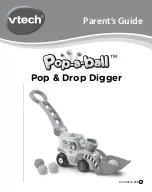
30
The basics of flying - using a model aircraft as an example
Any aircraft - full-size or model - can be controlled around three primary axes: the vertical (yaw) axis, the lateral (pitch) axis and the
longitudinal (roll) axis. Operating the elevator produces a change in the model’s flight attitude around the lateral axis (nose up
or down). External influences such as air turbulence constantly tend to divert the model from its intended flight path, and it is the
pilot’s job to control the model actively in such a way that it flies where he or she wants it to. The aircraft’s altitude is controlled
using the power system (motor and propeller). In our models the rotational speed of the propeller is usually controlled
proportionally by means of an electronic speed controller. Although applying up-elevator will make the model climb, it is important
to understand that it will also make it slow down, i.e. the aircraft will only continue to climb until its airspeed falls to the minimum
flying speed (stall speed). Opening the throttle (increasing power) will enable the model to continue climbing, i.e. the power of
the motor dictates the maximum climb angle.
The wing section
The wing features a cambered cross-section (known as an
airfoil) which affects the air as it passes through it: within a
given space of time, the air flowing over the wing has to cover
a longer distance than the air flowing under the wing. This
generates a low-pressure area on the top surface of the wing
which tends to create lift, holding or raising the aircraft in the
air.
Fig. A
The Centre of Gravity
If your Mentor is to fly safely and stably it must balance at the
correct point - just like every other aircraft. It is absolutely es-
sential to set the correct CG (balance point) before you fly the
model for the first time.
The stated CG position is measured from the root leading
edge of the wing (on either side of the fuselage). Support the
model on your fingertips at these points, and it should balance
level. Even better: use the MPX CG gauge, # 69 3054.
Fig. B
If necessary, adjust the position of the flight battery until this is
the case. If you still cannot set the balance point correctly, add
ballast (lead, plasticene, modelling clay) to the nose or tail to
correct it. If ballast is needed, fix it very securely. If the model is
tail-heavy, the ballast must be fixed in the fuselage nose. If it is
nose-heavy, the ballast is fixed at the tail end of the fuselage.
The
longitudinal dihedral
(difference between the wing and
tailplane incidence) is also important. Provided that you attach
the wing and tailplane to the fuselage exactly as described in
these instructions, this parameter will automatically be correct.
If both these settings - centre of gravity and longitudinal dihedral
- are correct, you will have no problems flying the model, and
the test-flying process will be straightforward.
Fig. C
Control surfaces, control surface travels
The model will only be able to offer safe, accurate flying
characteristics if the control surfaces move freely, deflect in the
correct directions, and move to the appropriate angles. The
control surface travels stated in the building instructions have
been established as a result of practical flight testing, and we
strongly recommend that you keep to them - at least initially.
You may wish to adjust them later to suit your style of flying,
and this is a straightforward procedure.
Transmitter control function arrangements
The transmitter is fitted with two primary sticks which control
the servos in the model; the servos in turn move the control
surfaces. The arrangement of the control functions shown here
corresponds to Mode A, but other stick modes are possible.
The transmitter is used to operate the control surfaces as
follows:
The rudder (left / right)
Fig. D
The elevator (up / down)
Fig. E
The ailerons (left / right)
Fig. F
The throttle (motor off / on)
Fig. G
The throttle (motor control) stick must stay in the set position
by itself, i.e. it must not be self-centring. For this reason the
throttle stick is usually set up with a ratchet. If your transmitter
is not set up in this way, please read the operating instructions
supplied with the RC set to find out how to set up the throttle
ratchet.
Fuselage
Canopy
Left wing
Rudder
Elevator
Fin
Tailplane
Right wing
Longitudinal (roll)
axis
Lateral (pitch)
axis
V
ertical (yaw)
axis
Main
undercarriage
Spinner
Aileron
GB



































